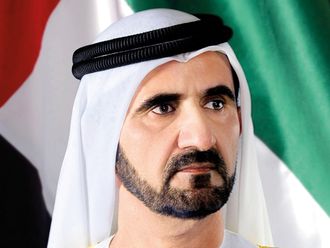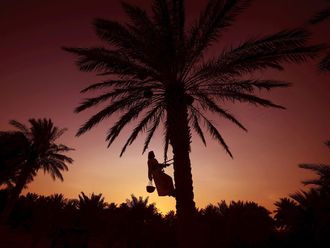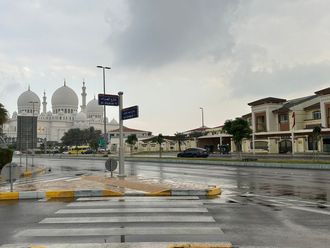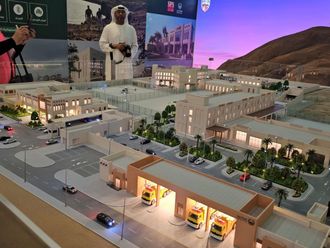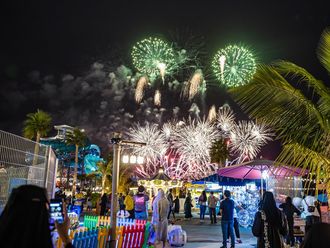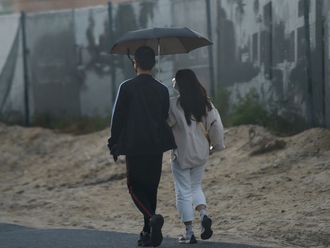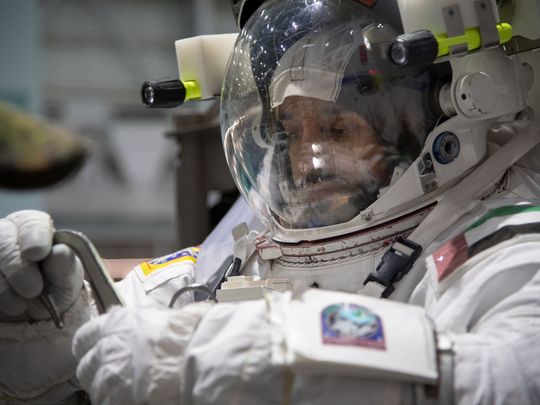
Dubai: The UAE’s second astronaut Sultan Al Neyadi, who is just days away from lifting off for the first Arab long-duration mission aboard the International Space Station (ISS), will be the subject of several scientific experiments that will be conducted by the Crew-6 astronauts including himself.
20 experiments by Al Neyadi
According to NASA, over 200 science experiments and technology demonstrations will be carried out during the six-month mission to the ISS. These include Al Neyadi conducting at least 20 experiments, apart from the tasks consigned by Nasa and doing maintenance work on the orbiting station.
- Emirati astronaut Sultan Al Neyadi completes ISS mission training at Nasa lab
- UAE astronaut Sultan Al Neyadi to study heart tissues, do jiu-jitsu, share dates with colleagues in Ramadan in space
- Watch: Emirati astronaut Sultan Al Neyadi heads to Florida for first long-duration Arab astronaut mission aboard ISS
Mission specialist
Al Neyadi is a mission specialist who is set to become the flight engineer for Expedition 69 once aboard the ISS.
NASA astronauts Stephen Bowen (spacecraft commander) and Warren Woody Hoburg (pilot) and Roscosmos cosmonaut Andrey Fedyaev (mission specialist) are joining him for the flight on the SpaceX Dragon “Endeavour” spacecraft. The SpaceX Falcon 9 rocket carrying the Crew-6 Endeavour spacecraft has a new target to lift off at 10:45am UAE time on Monday, February 27.
The scientific projects that the team would carry out span a wide range of disciplines — from life and physical sciences to advanced materials, technology development, in-space production applications, and even student-led research.
“Results from these studies will bring value to humanity, further our ability to explore, and enable a robust market in low Earth orbit,” stated ISS National Laboratory which will sponsor dozens of these investigations.
Top 10 topics
The UAE’s Mohammed Bin Rashid Space Centre (MBRSC) in Dubai has now released the top 10 topics covered in the scientific experiments that will be part of the first Arab long-duration space mission.
The fields of experiments include: cardiovascular system, epigenetics, plant biology, radiation, back pain, immune system, materials science, sleep analysis, fluid science and technical demonstration.
Adnan Al Rais, mission manager, UAE Astronaut Mission 2, said the scientific community in the UAE, including researchers and students, will take part in the mission through an educational and outreach programme.
Immune system
The Crew-6 will test a new tool for immune monitoring, said NASA. Immunity Assay, an investigation from ESA (European Space Agency), uses a functional immune test to monitor how spaceflight stressors affect cellular immune functions.
Until now, this test could only be accomplished on Earth and was conducted pre- and post-flight. A newly developed assay tube makes it possible to execute the test inflight, which could provide a clearer assessment of the immune changes that happen in flight and help inform development of countermeasures.
The body’s ability to defend against infections shows clear changes in response to simulated microgravity or confinement on Earth that appear to be associated with stress. Along with blood samples and saliva collections, the new test could be used to monitor stress-related immune performance during space missions and in settings on Earth.
Speaking after landing at the Kennedy Space Centre in Florida, where the launch will take place, Al Neyadi on Tuesday night spoke about the experiments on heart tissues as one of the most exciting ones.
Heart tissues, bioprinter
“One very interesting experiment that I’m looking really to see is seeing the heart tissue beating in space. So this is something like a cutting-edge technology that one day we can [use] when we start 3D-printing organs… This is really important to see how the structure is built in microgravity. So this can give us a really good insight how these tissues are built.”
Two investigations from the ISS National Lab and the National Institutes of Health (NIH) Tissue Chips in Space initiative will launch in the coming weeks, both studying heart muscle tissue in microgravity to better understand heart disease and test new potential therapeutics, said ISS National Lab.
Another study will test an updated bioprinter capable of printing human cells and tissues in microgravity that may one day be used to treat patients on Earth.
Materials science
Al Neyadi on Tuesday night also spoke about research in materials science.
“We’re going to test fluidics, we’re going to test the materials and how they burn in space. And this is for the future missions when we go into the lunar surface again or going into another planet. So we need to test materials and how they react in microgravity and different atmospheres, let’s say on Mars, for example. So a lot of excitement…I’m really excited to conduct a lot of [scientific experiments] and communicate whatever we have back to the people on earth.”
He pointed out that all the crew members had received training in cutting-edge technologies during their preparation for the mission.
“We are all trained to conduct a lot of [scientific experiments]. And we’ll be the hands, the eyes, the ears of the scientists who are working for years for a specific experiment. Some of the experiments are ongoing, some of them are ending soon and some of them are just starting,” he said.


